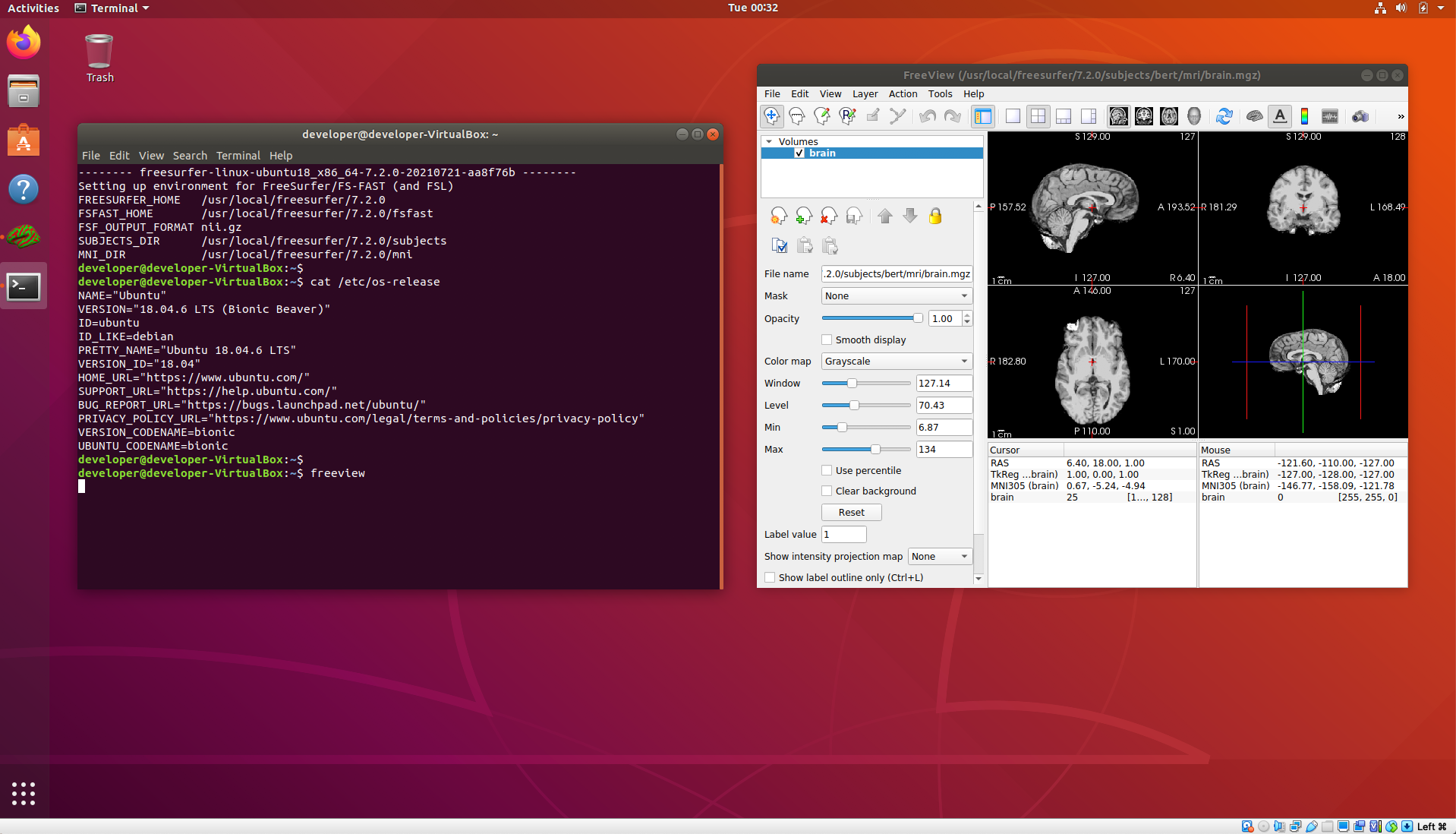| Deletions are marked like this. | Additions are marked like this. |
| Line 7: | Line 7: |
|
<<BR>> Host Disk Space (required): ~8GB for virtual image download (compressed *.ova file), ~30G for expanded VM image. <<BR>> Host Disk Space (optional): ~8GB for tutorial data download (compressed *.tgz file), ~14G for expanded tutorial data. |
<<BR>> Host Disk Space (required): ~8GB for virtual image download (compressed *.ova file), ~30G for expanded VM image.* <<BR>> Host Disk Space (optional): ~8GB for tutorial data download (compressed *.tgz file), ~14G for expanded tutorial data.* |
| Line 11: | Line 11: |
| <<BR>> ''* To accommodate the VM, the tutorial data, and snapshot data, please locate the VM on a disk partition with at least 60G of free space.'' | |
| Line 18: | Line 19: |
| * ''We are aware that VirtualBox currently may crash on Intel or M1 Macs running MacOS 12.x (Monterey) and are looking at a workaround for this.'' | * ''We are aware that VirtualBox may crash on Intel or M1 Macs running MacOS 12.x (Monterey).'' |
FreeSurfer VitrualBox VM Images
System Requirements:
Tested running on hosts: Windows 10, Mac OS 11.6 (Intel Mac) with VirtualBox 6.1.30.
VM: minimum of 8 GB free RAM apart from RAM already in use by the host OS and other applications.
VM: minimum of 2 CPU's/cores from the host.
Host Graphics card: 3D graphics card with its own graphics memory & accelerated OpenGL drivers.
Host Disk Space (required): ~8GB for virtual image download (compressed *.ova file), ~30G for expanded VM image.*
Host Disk Space (optional): ~8GB for tutorial data download (compressed *.tgz file), ~14G for expanded tutorial data.*
Host: A working network connection.
Additionally see the Freesurfer Release 7 System Requirements.
* To accommodate the VM, the tutorial data, and snapshot data, please locate the VM on a disk partition with at least 60G of free space.
Suggested Experience Level:
Some familiarity with downloading files, e.g., via a web browser or using commands such as wget, curl from the linux terminal.
Some familiarity with the linux terminal running bash shell including removing, copying, editing files and setting/unsetting environment variables.
Some familiarity with simple bash commands/scripting, e.g., as found in the shell initialization file.
Install VirtualBox on your Machine:
VirtualBox install on Windows OS host: Vbox_Windows_install.pdf
VirtualBox install on MacOS host: Vbox_MacOS_install.pdf *
VirtualBox install on linux OS host: linux downloads
* We are aware that VirtualBox may crash on Intel or M1 Macs running MacOS 12.x (Monterey).
Setup and Run the Virtual Image:
Once VirtualBox is installed on your host machine, you can download a 7zip file containing an image with Freesurfer and its shell environment pre-installed. The currently available images are:
Freesurfer 7.2.0 release in Ubuntu 18.04.06: FS_7_2_0_Ubuntu_18_04_06.ova.7z
Right click on the <file name>.ova.7z file and see what options you have under the choices for "Open with". If your current archive program choices cannot open a 7zip file, then try installing one of the utilities listed below. You will be prompted for a pass code when the archive is successfully opened. Send an email to the Freesurfer help list in order to receive the pass code to expand the archive.
For 7zip on Windows try the free version of WinRAR to expand the 7zip file.
For 7zip on MacOS try the free Unarchiver to expand the 7zip file.
For 7zip on linux try the package manager programs, e.g., yum, dnf, apt, to download and install a 7z or 7za binary.
Expanding the <file name>.ova.7z will generate a new file without the .7z extension, i.e., <file name>.ova will be created. This is the file to import directly into VirtualBox. If the archive program creates the <file name>.ova file under a subdirectory with the same <file name>.ova name, then rename the subdirectory to be something different. Be aware that some archive programs may delete the original <file name>.ova.7z file after it is expanded.
This document will take you through the steps to setup and run the VM. Screenshots to setup the VM were taken from VirtualBox running on MacOS and Windows. Apart from some variations in the GUI on different hosts, the menus options are the same on MacOS, Windows and Linux. See: Vbox_load_image.pdf
See this post about how to share a subdirectory from Windows inside the Ubuntu VM.
This document describes how to access (share) an external drive plugged into the Windows machine in the Ubuntu VM:
Vbox_Windows_mount_external_drive.pdf
Example screenshot of VM up and running:
Once the VM starts and you have added your Freesurfer license file, you can start a terminal and it should come up with the environment set to run the 7.2.0 release.

Adding the tutorial data to the VM:
This document describes how to setup and run the Freesurfer course tutorial data in the Ubuntu VM.
[[|setup_tutorial_data.pdf]]
